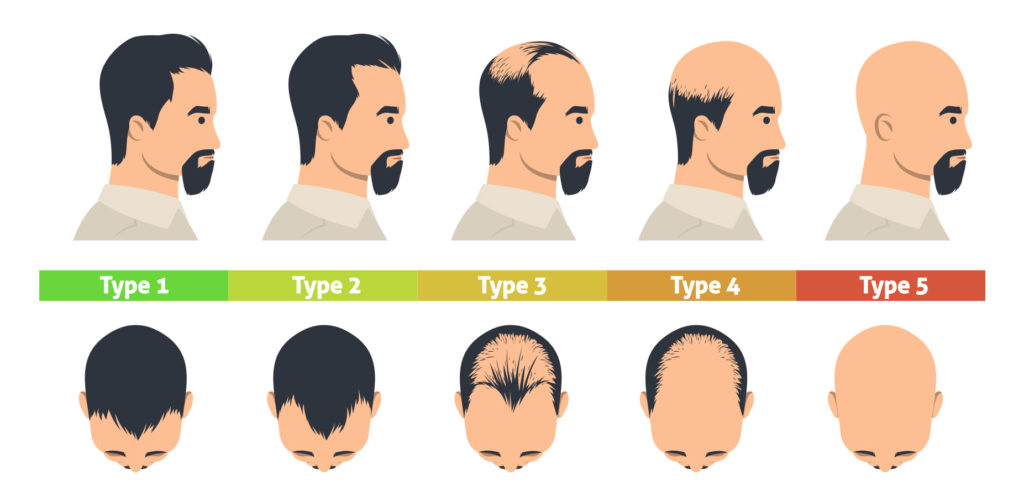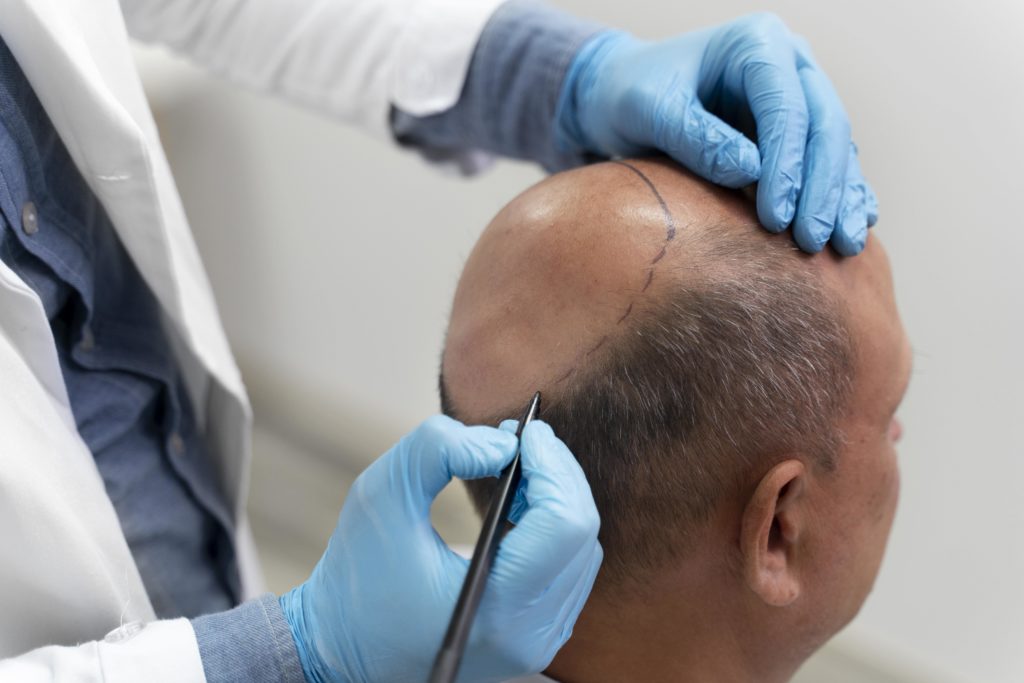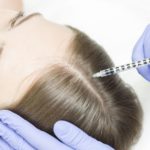Hair loss over time is a natural phenomenon that occurs in three stages: anagen, catagen and telogen. Accelerated hair loss can be indicative of alopecia. This phenomenon has its own characteristics that can warn the patient who is affected.
All categories of people are likely to be affected by alopecia: there is no distinction of ethnic origin or age. The first diagnosis is made by a blood test. A biopsy of the scalp may also be requested if the area has a scarred appearance. Discover the causes, symptoms and treatments that exist for alopecia.
Alopecia: what is it?
The word “alopecia” is the medical term for hair loss. It is most often manifested by baldness, or androgenetic alopecia. It affects men much more than women.
The natural growth cycle of a hair takes place in three distinct stages and generally lasts between two and five years. The first stage is called “anagen” and corresponds to the period of hair growth. This phase is the longest: it lasts several years.
During the second phase, called “catagen”, which lasts only about three weeks, the hair no longer grows. The hair roots move closer to the scalp. Finally, the third and last stage is called “telogen”. It leads to hair loss and the restarting of the hair cycle.
In the case of alopecia, there is a significant shortening of the anagen phase. The hair grows less quickly and falls out more often. This results in areas of baldness on the head, especially around the crown and temples.
According to the American Academy of Dermatology (study by Amy S Chen and Susan J Bayliss in “The genetics of hair shaft disorders”), it is normal to lose between 50 and 100 hairs per day. Beyond that, if the loss is daily, we can talk about alopecia.
What causes hair loss?
Several factors can cause hair loss, either temporarily or permanently:
- Allergies, irritants, toxins, burns, injuries and infections,
- The use of certain medications, especially anabolic steroids,
- Chronic renal failure,
- Radiation therapy and chemotherapy can also cause hair loss.
- An overdose of vitamin A,
- Iron deficiency anemia,
- Thyroid dysfunction,
- Fever,
- A hormonal imbalance or pregnancy can also be the cause of this phenomenon.
How do you recognize alopecia?

Thinning hair is the most apparent symptom of androgenetic alopecia.
Baldness for men affects first the temples and the top of the head. Later, the top of the head becomes bald. As a result, there is a receding hairline. In the end, only a crown of hair remains around the head.
As for baldness for women, unlike in men, it starts on the upper part of the head. However, it is much more diffuse and therefore more discreet. Thus, it is possible for some women with long hair to completely hide their baldness.
If it happens that men lose their hair completely, it is generally not the case for women.
Peladic hair loss occurs when hair suddenly falls out in small, rounded patches on the scalp. Sometimes it is the hair on the face or body that falls out in this way. In these people, the nails are sometimes punctuated with small marks or have small, cup-shaped depressions. This condition usually progresses in flare-ups, interspersing hair and body hair growth.
The different types of alopecia
There are various forms of alopecia. Each of these types has different causes and origins:
- androgenetic alopecia, more commonly called baldness. This is the most common form of alopecia
- telogen effluvium: this type of alopecia affects more men than women and generally resolves itself after a few months
- scarring alopecia: it appears following a trauma to the scalp (accident, burn, etc.)
- alopecia (or patchy alopecia), this form of hair loss occurs in circumscribed areas and is considered an autoimmune disease
- traction alopecia, formerly called bun alopecia, concerns women who exert too much traction on their scalp through hairstyles (tight braids, straightening, etc.)
- trichotillomania: this is a behavioral disorder that consists of compulsively pulling out one’s hair
What treatments exist for hair loss?

There are different types of treatments for alopecia:
1 – Treatment with medication
The goal of treatment is to delay or stop hair loss and encourage new hair growth. Some medications stimulate hair growth. Their use (such as topical minoxidil and oral finasteride) is not suitable for all patients with alopecia.
The effectiveness of these medications for hair growth is limited. In a small number of cases, they allow complete hair growth. These medications are very effective for small amounts of hair loss. However, their positive effect ceases as soon as the treatment is stopped.
Finasteride is not suitable for women who wish to become pregnant: it can cause serious birth defects. Biotin is a type of vitamin that strengthens hair and nails and is often used as an adjuvant treatment.
Another type of medication that can be used for certain types of hair loss is a corticosteroid. An injection of corticosteroids into the affected areas can sometimes treat less severe cases of alopecia. Systemic corticosteroids (tablets) have long-term side effects and are only used in the most severe cases.
In the case of severe alopecia of any kind, drug treatments can reduce hair loss, but cannot eliminate the cause. To remedy it, surgery or the wearing of a wig or hairpiece may be considered. You can also learn to cope with your hair loss and not seek other forms of medical treatment.
2 – Treatment via Hair Transplant
Hair transplant treatment involves removing hair follicles from the back of the head and transplanting them into bald areas of the scalp. When hair is wavy or curly, the number of hairs per square centimeter is lower for each graft. The same is true for people with hair color similar to their skin color.
Unfortunately, if hair loss continues after transplantation, the source of grafts will also decrease. The least suitable candidates for a hair transplant are young men in their twenties with rapidly progressing baldness. If this is the case, and this young man’s father was bald at 55, a hair transplant can be very expensive.
More and more patients are deciding to treat their alopecia with a hair transplant and this is an excellent decision. Indeed, the drug route is very dangerous for health in the medium and long term (extremely harmful side effects). Moreover, other solutions to treat hair loss are temporary – or even ineffective – depending on the type of alopecia of the patient.
On the other hand, as seen previously, hair transplantation is a radical method but it has a certain cost. And it is not uncommon to see people opting for hair transplantation in Turkey in order to take advantage of low cost rates. However, this solution is impertinent and even dangerous! The risks and side effects associated with this procedure are not to be taken lightly, far from it.
The unhealthy establishments and unqualified personnel who perform these operations are not a myth. Unfortunately, there are many of them. And it is very difficult to have the necessary distance. Not to mention the psychological distress in which the patients ready to perform the operation find themselves.
Conclusion: to undergo a hair implantation is good, to perform a hair transplant with a professional surgeon is better!

Contact our hair transplant clinic in Brussels at +32-4731-379-19 or via the contact form for a free diagnosis. Our specialists at regen-hair are here to help you solve your alopecia problems for good.








